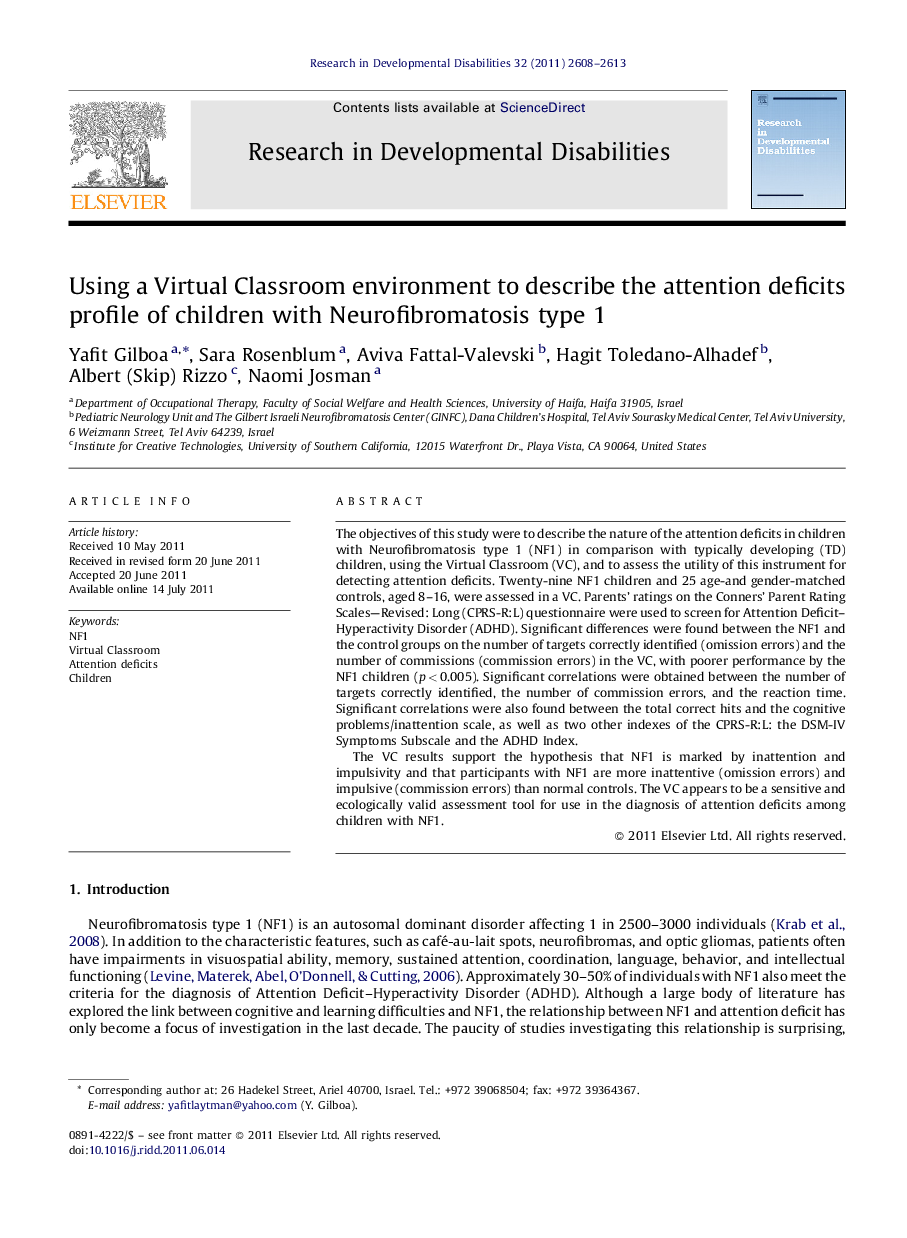| Article ID | Journal | Published Year | Pages | File Type |
|---|---|---|---|---|
| 371844 | Research in Developmental Disabilities | 2011 | 6 Pages |
The objectives of this study were to describe the nature of the attention deficits in children with Neurofibromatosis type 1 (NF1) in comparison with typically developing (TD) children, using the Virtual Classroom (VC), and to assess the utility of this instrument for detecting attention deficits. Twenty-nine NF1 children and 25 age-and gender-matched controls, aged 8–16, were assessed in a VC. Parents’ ratings on the Conners’ Parent Rating Scales—Revised: Long (CPRS-R:L) questionnaire were used to screen for Attention Deficit–Hyperactivity Disorder (ADHD). Significant differences were found between the NF1 and the control groups on the number of targets correctly identified (omission errors) and the number of commissions (commission errors) in the VC, with poorer performance by the NF1 children (p < 0.005). Significant correlations were obtained between the number of targets correctly identified, the number of commission errors, and the reaction time. Significant correlations were also found between the total correct hits and the cognitive problems/inattention scale, as well as two other indexes of the CPRS-R:L: the DSM-IV Symptoms Subscale and the ADHD Index.The VC results support the hypothesis that NF1 is marked by inattention and impulsivity and that participants with NF1 are more inattentive (omission errors) and impulsive (commission errors) than normal controls. The VC appears to be a sensitive and ecologically valid assessment tool for use in the diagnosis of attention deficits among children with NF1.
► The VC results support the idea that participants with NF1 are more inattentive (commit more omission errors) than normal controls. ► The VC results support the idea that participants with NF1 are more impulsive (make more commission errors) than normal controls. ► The total correct hits of the VC was correlated with the inattention scale of the CPRS-R:L and two additional indexes. ► No significant differences were revealed between the groups on reaction time or on any of the three measures of head movements.
